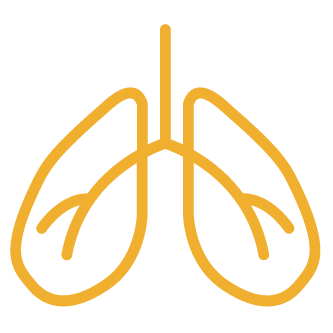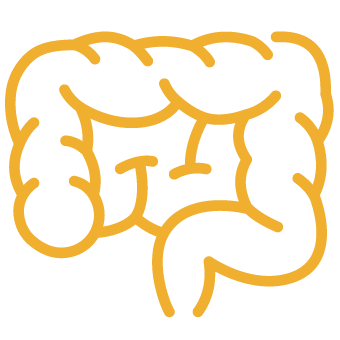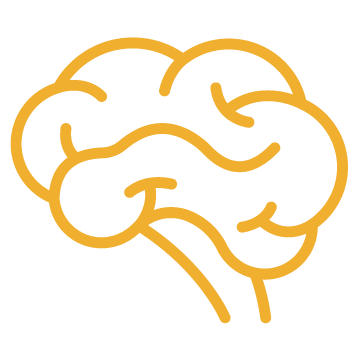Neurology
When should a neurologist suspect Pompe disease?
The information on this page is tailored for neurologists. For more detailed information on the cause, inheritance, diagnosis and management of Pompe disease, please refer to our ‘About Pompe disease’ page.
Neuromuscular signs in Pompe disease
In late-onset Pompe disease, the first clinical manifestations are often proximal muscle weakness accompanied by other nonspecific complaints of exercise intolerance, muscle pain and fatigue. Tongue weakness is often an early sign, which can cause swallowing and speaking difficulties when coupled with bulbar muscle impairment.1,2 Progressive muscle deterioration leads to problems with activities of daily living, significant motor impairment, reduced mobility and eventual wheelchair use.2
These early manifestations mean awareness of late-onset Pompe disease by neurologists may be key in establishing the correct diagnosis. Neuromuscular evaluations – namely functional testing and electromyography – can help raise suspicion.2,3
Click on the headings to find out about these examinations and the findings suggestive of late-onset Pompe disease.
- Manual or quantitative muscle testing (QMT)
- Pattern of weakness is suggestive of late-onset Pompe disease
- Proximal weakness greater than distal
- Increased membrane irritability
- Myotonic discharges (typical or atypical, may be observed only in the paraspinal muscles)
- Short duration and low amplitude motor unit action potentials (MUAPs)
Laboratory testing often reveals elevated creatine kinase levels (hyperCKaemia) early in the disease course, with levels ranging from normal to 15 times the upper limit of normal. As a result, any of the following should raise suspicion of late-onset Pompe disease:2
- Unexplained proximal/axial muscle weakness (with or without respiratory symptoms)
- Restrictive respiratory insufficiency with hyperCKaemia (up to 15-fold)
- Exercise intolerance
Differential diagnoses of Pompe disease
Electrophysiological studies are also useful to consider potential differential diagnoses, especially since the initial nonspecific symptoms of late-onset Pompe disease can clinically resemble a range of other neuromuscular disorders, as shown in the table below.2,4
| Differential diagnosis | Shared signs/symptoms |
|---|---|
| Limb–girdle muscular dystrophy | Progressive muscle weakness in the pelvis, legs, and shoulders; elevated CK |
| Becker muscular dystrophy | Progressive proximal muscle weakness, prominent quadriceps weakness, calf hypertrophy, elevated CK |
| Myasthenia gravis | Proximal muscle weakness |
| Spinal muscular atrophy | Progressive proximal muscle weakness and atrophy, mild elevated CK |
| Polymyositis | Unexplained muscle weakness with elevated CK |
| Glycogen storage diseases (IIIa, IV, V) | Hypotonia, muscle weakness with distal involvement, elevated CK |
| Danon disease | Skeletal muscle myopathy |
| Mitochondrial myopathies | Hypotonia, muscle weakness, elevated CK |
| Lipid storage myopathies | Fluctuating muscle weakness, elevated CK |
| Selenoprotein N1-related myopathy | Muscle hypotrophy |
Adapted from Ozdamar et al., 2023.2
Other signs and symptoms of Pompe disease
Given Pompe disease is a rare disorder with a wide clinical spectrum, nonspecific initial symptoms and a variable disease course, neurologists need a high index of suspicion to recognise late-onset Pompe disease in clinical practice.2 It is important to be aware of some of the key non-neurological manifestations, including:1

Musculoskeletal
Scapular winging, osteopenia/osteoporosis, vertebral fractures, rigid/bent spine syndromes, scoliosis /kyphosis/hyperlordosis

Respiratory
Headaches, sleepiness, sleep apnoea, shortness of breath, impaired cough, respiratory failure

Gastrointestinal
Chronic diarrhoea, vomiting, abdominal pain, lack of appetite, early satiety and bowel incontinence

Cerebrovascular
Aneurysm formation, haemorrhage, stroke, vascular, stiffness leading to increased blood pressure

Cardiac
Rhythm disturbances, cardiac hypertrophy

Nervous system
Paraesthesia, burning feet
Please refer to the ‘About Pompe’ page for further information on the signs and symptoms of Pompe disease.
If you suspect Pompe disease, referral to nominated ultra-specialist centre is essential so that patients can access full genetic testing and access to disease-specific therapies. Please refer to our ‘Find a specialist centre’ page to find out more.
NP-NN-GB-00031223
October 2024
- Toscano A, Rodolico C, Musumeci O. Multisystem late onset Pompe disease (LOPD): an update on clinical aspects. Ann Transl Med. 2019;7(13):284.
- Ozdamar SE, Koc AF, Durmus Tekce H, et al. Expert opinion on the diagnostic odyssey and management of late-onset Pompe disease: a neurologist’s perspective. Front Neurol. 2023;14:1095134.
- American Association of Neuromuscular & Electrodiagnostic Medicine. Diagnostic criteria for late-onset (childhood and adult) Pompe disease. Muscle Nerve. 2009;40(1):149-160.
- Musumeci O, Toscano A. Diagnostic tools in late onset Pompe disease (LOPD). Ann Transl Med. 2019;7(13):286.


